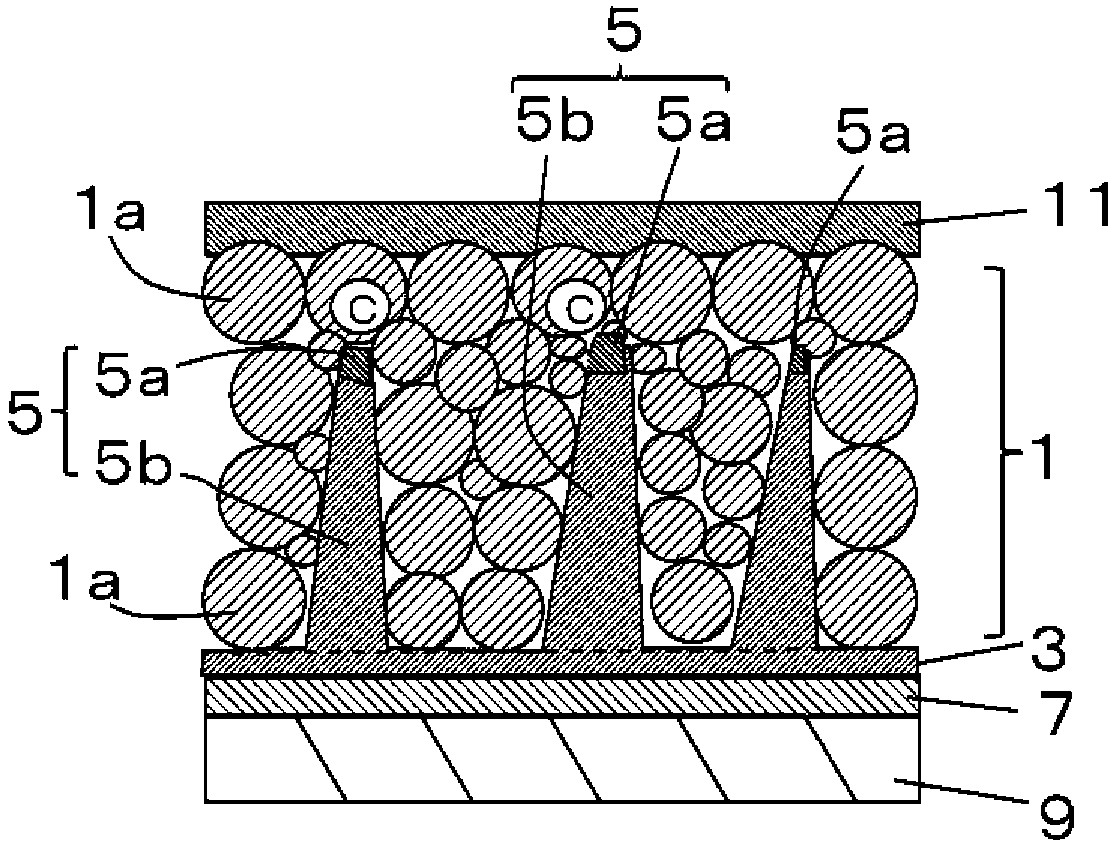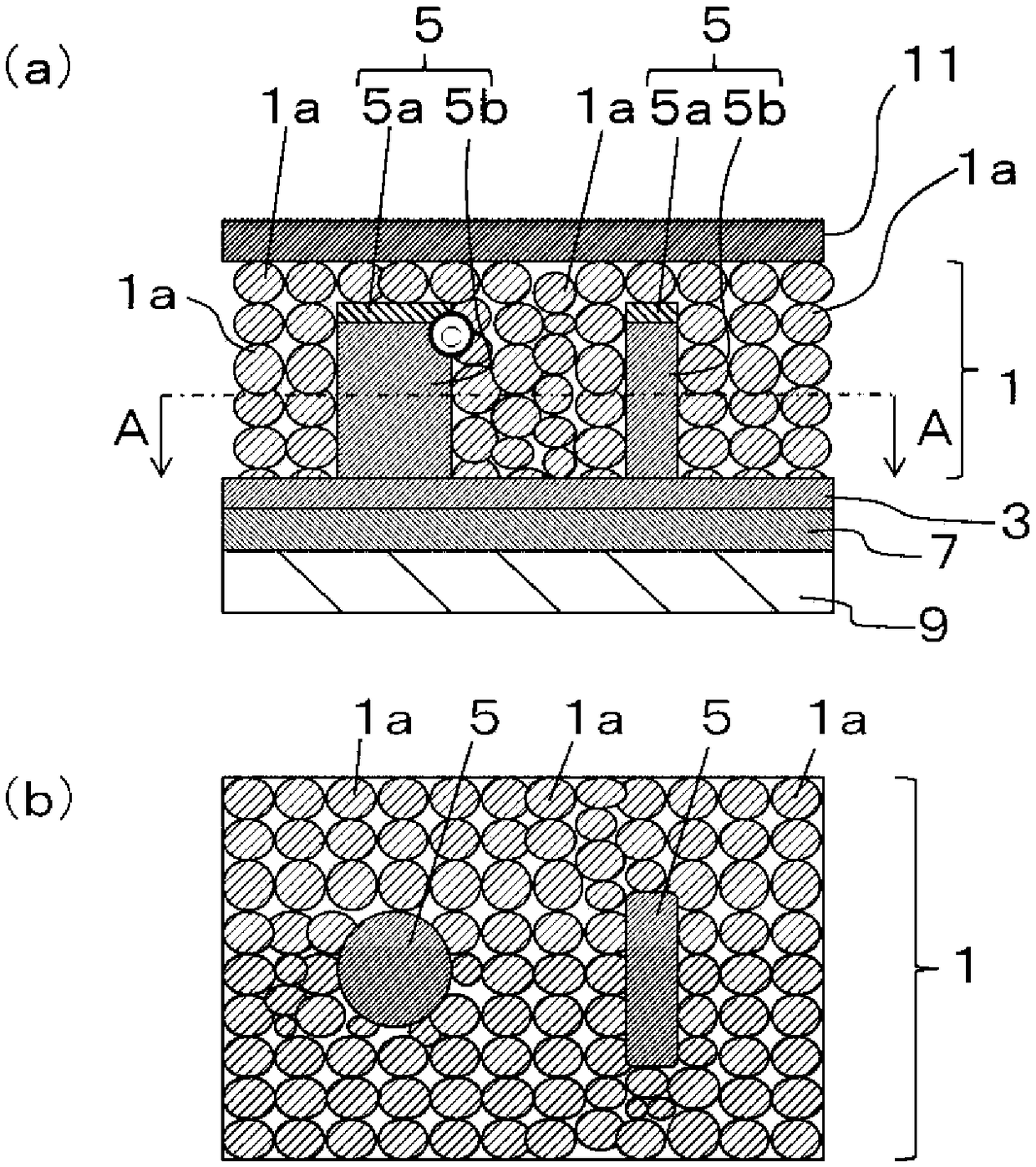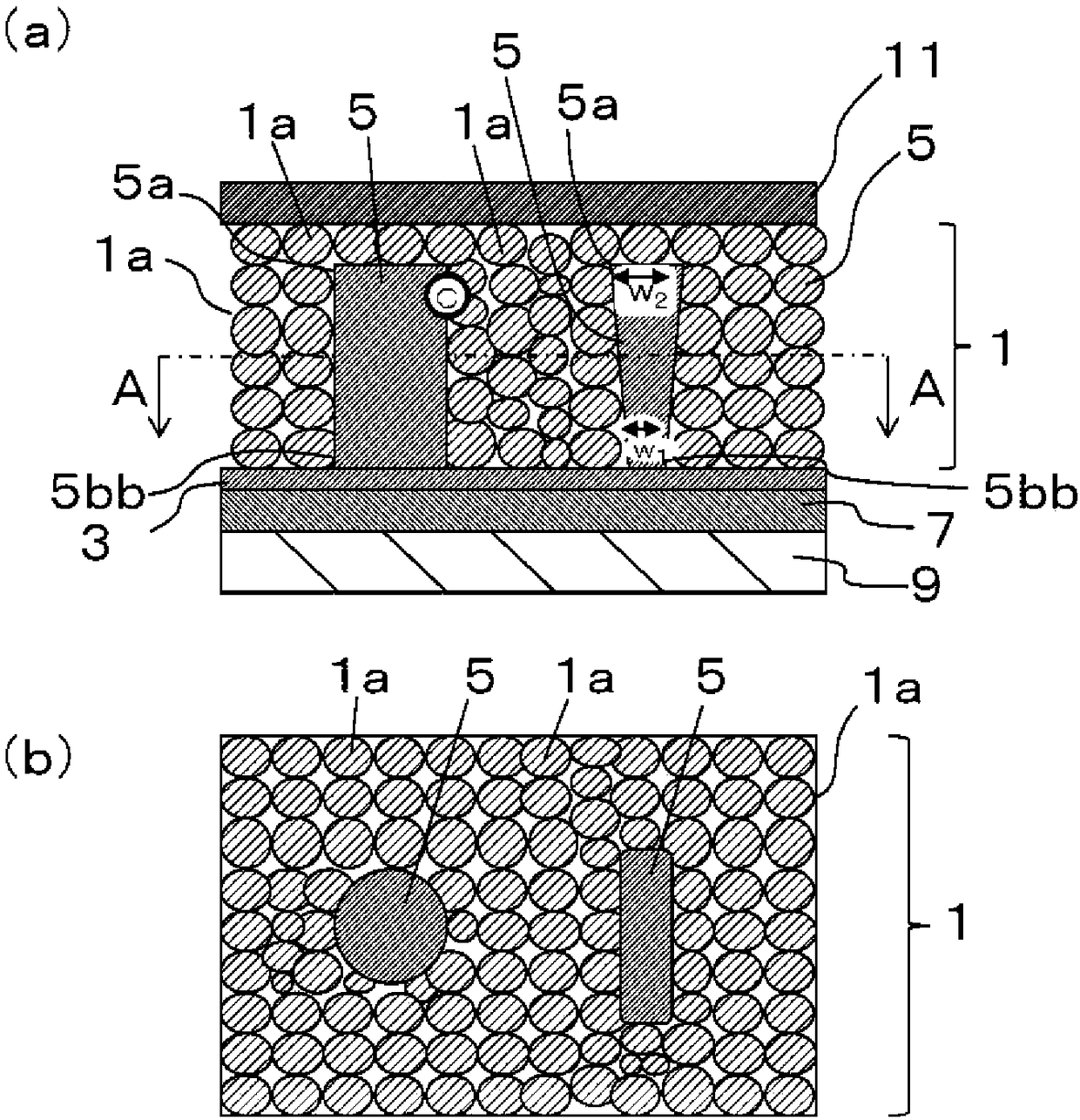Photoelectric conversion device and photoelectric conversion module
A conversion device, optoelectronic technology, applied in photovoltaic power generation, circuits, electrical components, etc., can solve the problems of reduced charge amount, reduced carrier density, unable to improve photoelectric conversion efficiency, etc., to improve short-circuit current density and high collection capacity. Effect
- Summary
- Abstract
- Description
- Claims
- Application Information
AI Technical Summary
Problems solved by technology
Method used
Image
Examples
Embodiment
[0074] Hereinafter, an example in which a photoelectric conversion device (quantum dot solar cell) to which zinc oxide is applied as a main component of the base layer 3 and the carrier collection part 5 is produced and evaluated is shown.
[0075] First, a glass substrate on which an ITO film was formed was prepared. Next, a mixed solution of zinc nitrate (500mM (mmol)) and hexamethylenetetramine (250mM (mmol)) was prepared, and the stirring conditions were changed to 0 minutes, 20 minutes, and 40 minutes, thereby forming on the ITO film. Base layer 3 and carrier collection part 5 having different molar ratios of oxygen to metal (zinc).
[0076] Next, a previously prepared solution containing PbS quantum dots (average particle diameter: 5 nm) was applied by spin coating from above the carrier collection portion 5, followed by densification treatment to form the quantum dot accumulation portion 1.
[0077] Next, on the surface of the quantum dot accumulation part 1, a vapor-d...
PUM
 Login to View More
Login to View More Abstract
Description
Claims
Application Information
 Login to View More
Login to View More - R&D
- Intellectual Property
- Life Sciences
- Materials
- Tech Scout
- Unparalleled Data Quality
- Higher Quality Content
- 60% Fewer Hallucinations
Browse by: Latest US Patents, China's latest patents, Technical Efficacy Thesaurus, Application Domain, Technology Topic, Popular Technical Reports.
© 2025 PatSnap. All rights reserved.Legal|Privacy policy|Modern Slavery Act Transparency Statement|Sitemap|About US| Contact US: help@patsnap.com



